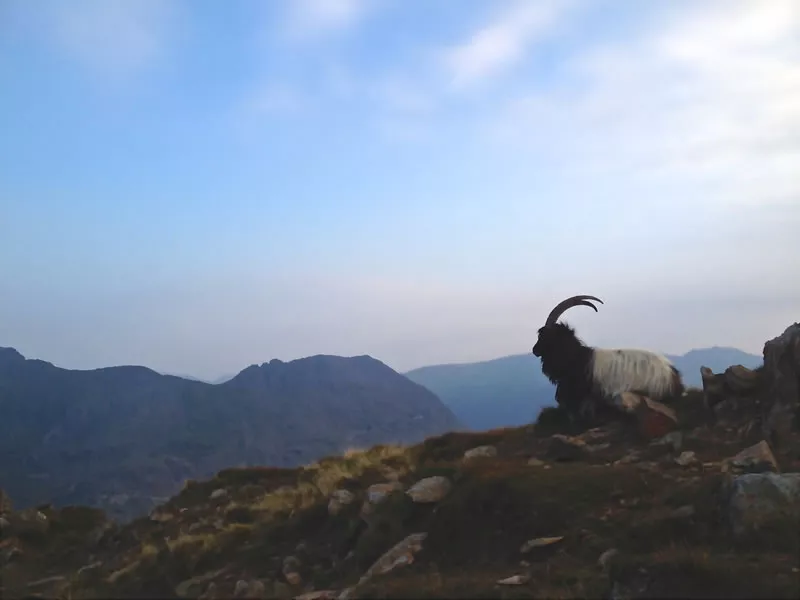About Yr Wyddfa
History and Environment
North Wales is a land of high mountains, rugged crags, tumbling rivers, clear lakes, ancient woodland and a varied coastline.
Within this, the old kingdom of Gwynedd is the jewel in the crown, known in Welsh as Eryri and in English as Snowdonia.
The Snowdonia National Park has 15 mountains that sit over 3000 feet and Snowdon or Yr Wyddfa, meaning burial mound in Welsh, sits as the chieftain of them all.
The mountain was originally formed over 450 million years ago through tectonic plate collision and was then underwater.
We know this by the fossils of shell fragments found on the summit area.

At this time there were many volcanic eruptions in the area, laying down layers of ash and rock, that have become the rocks of Snowdon today.
Yr Wyddfa was then formed into the shape that we recognise today through a series of massive folding and mountain building phases, where rock was exposed to huge heat and force and literally ‘squeezed’ upwards. There were also periods of very cold temperatures and resulting ice ages, the most recent one being just 10,000 years ago.
The glaciers of this most recent ice age have carved out the sharp peaks and valleys we see now.
Mountaineering has been a fairly recent pursuit, popular from the Victorian age, but Snowdon has been at the heart of many people’s way of life since the Bronze Age. There are also many remains of Victorian copper and slate mines on the mountain, as well as older settlements and farms. There is so much human and natural history evident on this mountain, you literally are walking back in time...
The Snowdon Mountain Railway was first opened in 1896 but the first stone shelters were built at the summit in 1820. Now, there is a unique visitor centre at the summit, Hafod Eyri (Summerhouse in Snowdonia) which was re-designed and opened in 2009.
As well as providing a wealth of interest to Victorian scientists and botanists, the mountain has long been a training ground for expeditions to the Alps and the Himalayas.

The Pen y Gwryd Hotel at the foot of the mountain was the base for the 1953 Hillary and Tenzing Everest expedition, whilst training for their successful summit attempt.
On the mountain you will see local farmers’ sheep grazing high on the crags and slopes, as well as a feral goat community, if they are about.
There are plenty of varieties of grasses, mosses, heathers, ferns, alpine flowers and white sparkly quartz veins. Sometimes these quartz veins and rocks look like snow!
Look out for large black ravens swooping near the summit as well as seagulls who have migrated inland scavenging for food from walkers.

